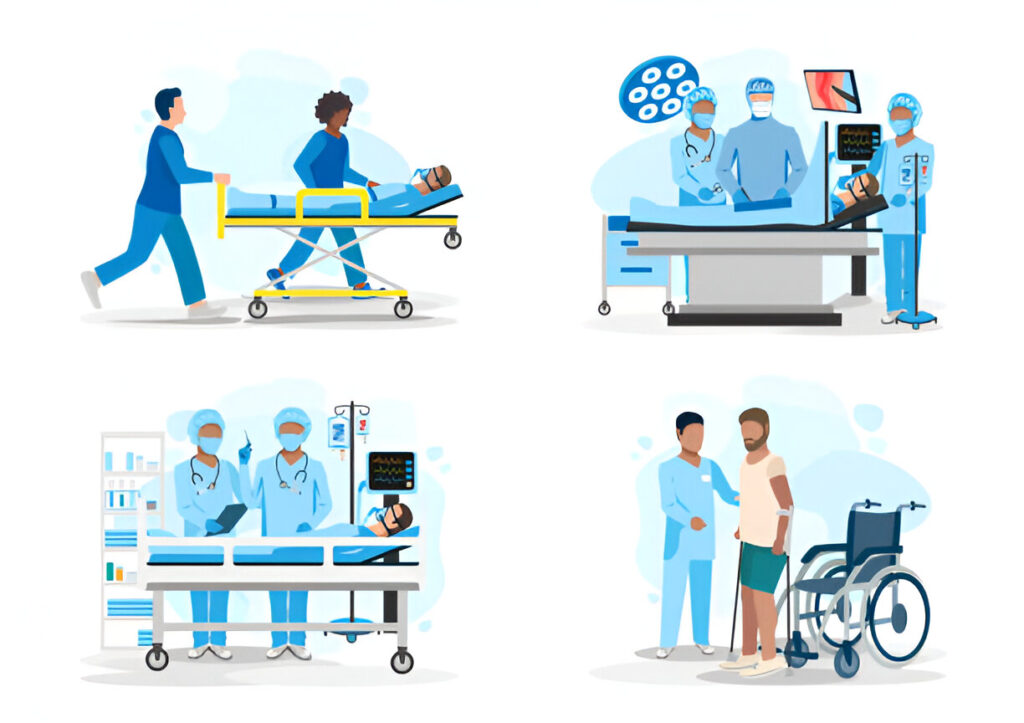Proper patient handling is a crucial skill for healthcare workers to ensure safety, maintain patient dignity, and reduce the risk of injuries. From lifting techniques to using equipment effectively, understanding the best practices can create a safer environment for both patients and caregivers. Below are essential tips to enhance patient handling procedures and promote overall wellbeing.
Understanding Proper Body Mechanics
One of the fundamental aspects of patient handling is mastering body mechanics. Poor posture or improper movements can lead to long-term injuries, especially when lifting or transferring patients. To avoid these risks:
- Maintain a stable stance: Place your feet shoulder-width apart to create a strong base.
- Bend your knees, not your back: When lifting, always squat and rely on your legs for power.
- Keep the load close: Hold the patient or object as close to your body as possible to reduce strain.
- Avoid twisting movements: Turn your whole body with your feet instead of twisting your torso.
These steps help protect not only the worker but also ensure the patient is handled with care.
Planning Ahead
Thorough planning is vital before attempting patient handling tasks. Assess the situation to prevent mishaps:
- Assess the patient’s mobility: Determine whether the patient can partially support their weight or requires full assistance.
- Choose the right equipment: Always select tools suited to the task, be it a gait belt, mechanical lift, or slide board.
- Think about the environment: Clear clutter and ensure there’s enough space to move freely.
For instance, planning ahead for transitions such as transfers from a bed to a wheelchair can save time and reduce the risk of injury.
Effective Use of Equipment
Modern healthcare relies heavily on tools and devices designed to assist in handling patients. Here’s how to use them effectively:
- Gait Belts: These are excellent for helping patients transfer or walk. Position the belt snugly around the waist while offering balanced support.
- Mechanical Lifts: When moving heavier or immobile patients, a mechanical lift is essential. Always check its condition and follow the manufacturer’s guidelines.
- Slide Sheets: For repositioning or moving patients in bed, slide sheets minimize friction and make the job easier.
Proper training on using equipment should be a continuous priority since it significantly impacts patient and caregiver safety.
Communication is Key
Clear, empathetic communication with patients is another important element of effective patient handling. Inform patients about each step so they can cooperate and feel secure. Use a calm and reassuring tone to ease any nerves they might have. Encourage feedback from the patient whenever possible—it helps adjust the approach to suit their comfort level.
Additionally, having good coordination with fellow healthcare workers is invaluable during team lifting or transfers. Agree on a sequence of movements beforehand to ensure everyone stays synchronized.
Minimizing Risks with Patient Transfers
Patient transfers, such as moving someone from a wheelchair to a bed or stretcher, are among the most common tasks healthcare workers encounter. To minimize risks:
- Use pivot techniques when possible, allowing the patient to rotate around their stronger leg.
- Avoid lifting alone for heavier patients, and get extra help if additional support is needed.
- Secure assistive devices like brakes on wheelchairs or beds before starting.
By taking these precautions, you significantly lower the chance of accidents while ensuring a smooth transition.
Managing Your Own Health
While tending to patients is the priority, healthcare workers must take care of themselves too. Overexertion and burnout are real concerns in this field, leading to injuries or reduced quality of care. Ensure you:
- Take regular breaks to relax and stretch.
- Report any pain or discomfort immediately.
- Follow workplace guidelines for safe lifting and handling.
Your well-being directly affects your ability to provide the best care to patients.
The Role of Documentation
Documenting patient handling activities not only ensures compliance with health regulations but also aids in continuity of care. Accurate records of a patient’s mobility and handling requirements allow healthcare teams to deliver consistent service. Systems that include features like an appointment reminder can further streamline caregiving tasks and improve the patient experience.
Conclusion
Patient handling isn’t just about strength—it’s about technique, planning, and respect for patient dignity. By understanding body mechanics, using equipment effectively, fostering communication, and prioritizing safety, healthcare workers can ensure optimal outcomes for patients and themselves alike. Remember, consistent training and awareness remain key to mastering these essential skills.
Through ongoing effort and attention to detail, healthcare workers contribute to a safer and more compassionate healthcare system for everyone.


